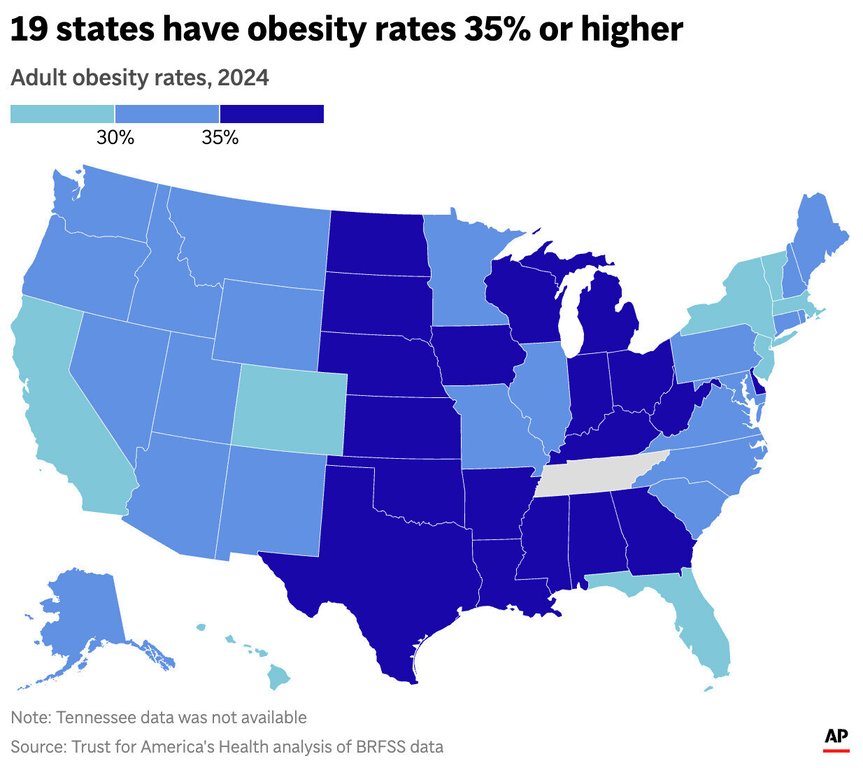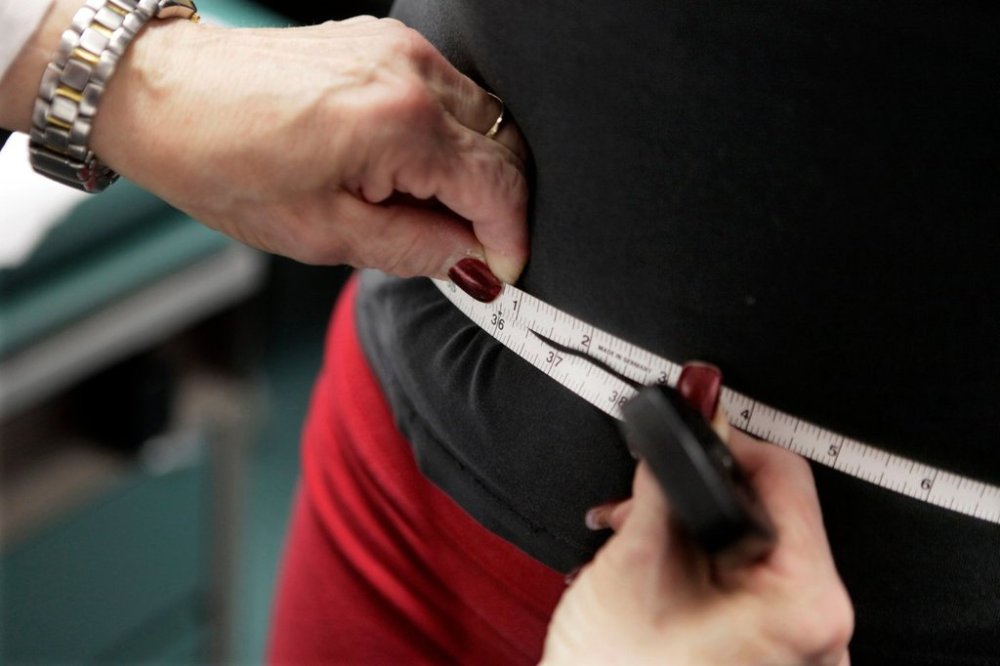Obesity remains high in the US, but more states are showing progress, a new report finds
Advertisement
Read this article for free:
or
Already have an account? Log in here »
To continue reading, please subscribe:
Monthly Digital Subscription
$1 per week for 24 weeks*
- Enjoy unlimited reading on winnipegfreepress.com
- Read the E-Edition, our digital replica newspaper
- Access News Break, our award-winning app
- Play interactive puzzles
*Billed as $4.00 plus GST every four weeks. After 24 weeks, price increases to the regular rate of $19.00 plus GST every four weeks. Offer available to new and qualified returning subscribers only. Cancel any time.
Monthly Digital Subscription
$4.75/week*
- Enjoy unlimited reading on winnipegfreepress.com
- Read the E-Edition, our digital replica newspaper
- Access News Break, our award-winning app
- Play interactive puzzles
*Billed as $19 plus GST every four weeks. Cancel any time.
To continue reading, please subscribe:
Add Free Press access to your Brandon Sun subscription for only an additional
$1 for the first 4 weeks*
*Your next subscription payment will increase by $1.00 and you will be charged $16.99 plus GST for four weeks. After four weeks, your payment will increase to $23.99 plus GST every four weeks.
Read unlimited articles for free today:
or
Already have an account? Log in here »
For the first time in more than a decade, the number of states with rates of obesity of 35% or more has dropped, an encouraging sign that America’s epidemic of excess weight might be improving. But cuts to federal staff and programs that address chronic disease could endanger that progress, according to a new report released Thursday.
Nineteen states had obesity rates of 35% or higher in 2024, down from 23 states the year before, according to an analysis of the latest data collected by the U.S. Centers for Disease Control and Prevention. The CDC data was analyzed by the nonprofit group Trust for America’s Health.
The group’s analysis follows a CDC report last year that found that the overall rate of obesity in the U.S. is high but holding steady, affecting about 40% of the population.

While the decline is positive, “it’s too soon to call it a trend,” said Dr. J. Nadine Gracia, president and chief executive for TFAH.
And with recent federal funding cuts, staff layoffs and eliminated programs, “this potential progress is also at risk,” Gracia said.
A U.S. Health and Human Services Department spokesman said in an email that the administration is “encouraged by the new data showing progress in the fight against obesity.”
“We are restructuring public health programs to eliminate waste, reduce bureaucracy, and redirect resources toward real prevention,” said spokesman Andrew Nixon.
The latest report analyzed data from the CDC’s 2024 Behavioral Risk Factor Surveillance System, which uses annual telephone surveys to collect data on health behaviors and chronic conditions in U.S. states and territories.
It showed that 19 states had obesity rates among adults of 35% or higher, 22 states had rates between 30% and 35% and nine states had obesity rates of below 30%. The rates varied from a low of 25% in Colorado to a high of more than 40% in West Virginia.
Between 2023 and 2024, no state had statistically significant increases or decreases in their obesity rates, after 18 states saw significant increases in the previous five years, the report found.
Before 2013, no state had an adult obesity prevalence at or above 35%, By 2019, a dozen states had rates that high — and the number continued to climb.
In adults, obesity is defined as having a body mass index of 30 or higher. Body mass index is a calculation based on height and weight. Obesity is a chronic disease linked to a host of serious health problems including diabetes, stroke, cancer and heart disease.

It’s not clear exactly what may be driving the apparent improvements in obesity. Wider use of drugs such as Wegovy and Zepbound — which target appetite and slow digestion — could be starting to show up in reported data, said Aviva Musicus, a science director for the Center for Science in the Public Interest, an advocacy group. Increased support for nutrition assistance programs during the COVID-19 pandemic might also be a factor, she suggested.
The report also details a broad range of federal, state and local efforts that focus on improving nutrition and boosting physical activity, said Solveig Cunningham, an Emory University global health expert who specializes in obesity.
“I think the report would argue that some of these interventions may actually be successful,” said Cunningham, who was not involved with the research. “That would suggest that there are possibly ways in which we could prevent obesity at the population level, which would be a really, really big deal.”
___
The Associated Press Health and Science Department receives support from the Howard Hughes Medical Institute’s Department of Science Education and the Robert Wood Johnson Foundation. The AP is solely responsible for all content.

